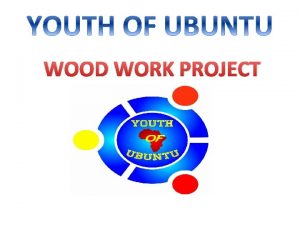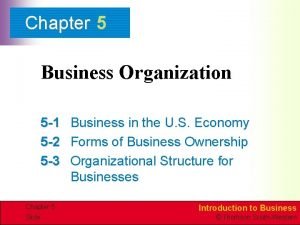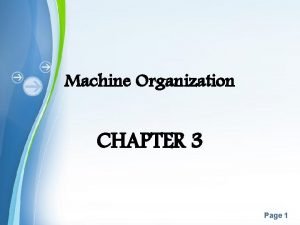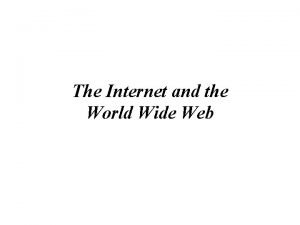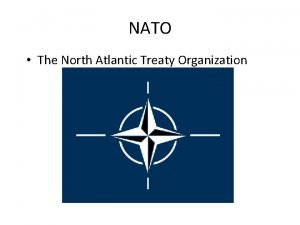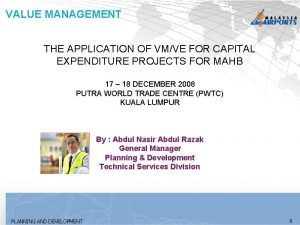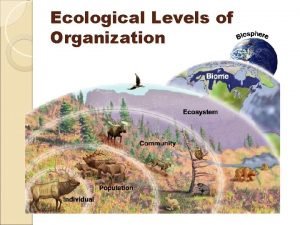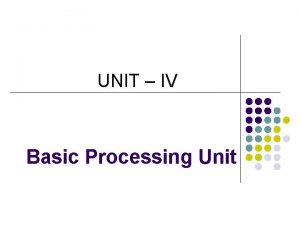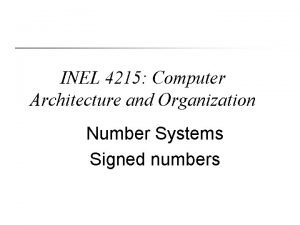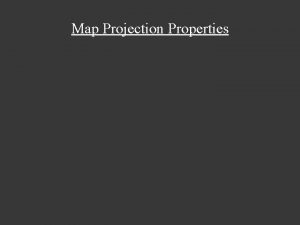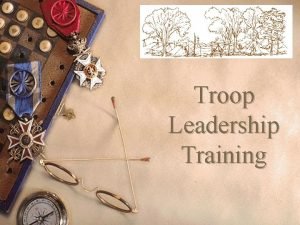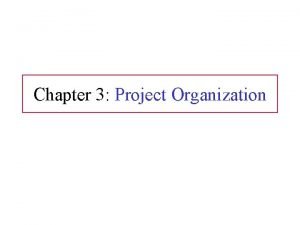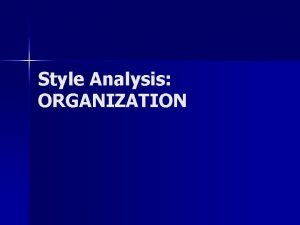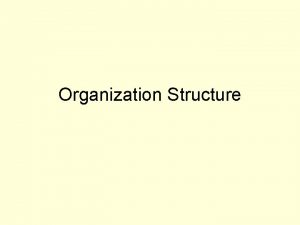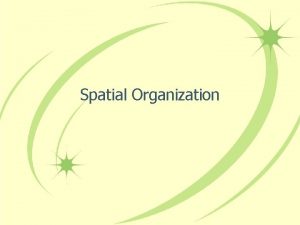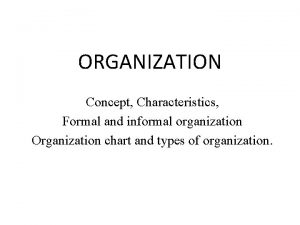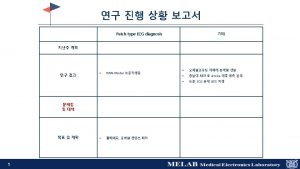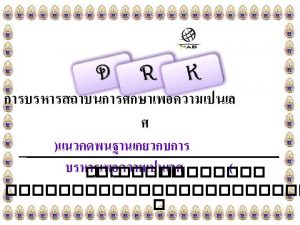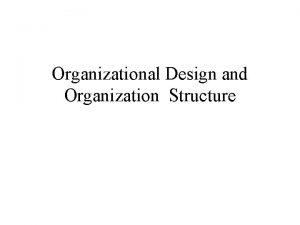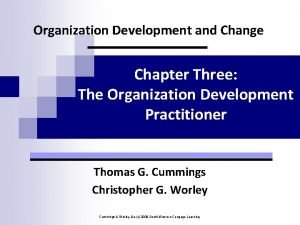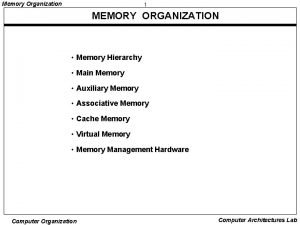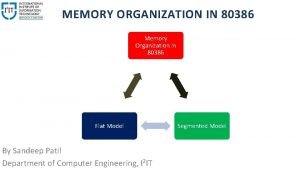What is an organization An organization is a




















- Slides: 20

What is an organization? • An organization is a stable, formal social structure that takes resources from environment and processes these to produce outputs. • Organizations use information to produce outputs, but are not designed primarily for processing information.

Compare the technical definition of organizations with the behavioral definition • The technical definition of an organization focuses on three elements: capital and labor, production, and products for consumption. • The technical definition highlights the formal and stable aspect of organizations. • The behavioral definition states that an organization is a collection of rights, privileges, obligations, and responsibilities that are delicately balanced over a period of time through conflict and conflict resolution. • The behavioral definition highlights the people within the organization, their ways of working, their relationships. • The behavioral definition is the more realistic of the two.

What features do all organizations have in common? • Universal characteristics of organizations include: => Clear vision of labor => Hierarchy => Explicit rules and procedures => Impartial judgements => Technical qualifications for positions => Maximum organizational efficiency

In what ways can organizations diverge? • Organizations can differ in their: => Organizational type => Environment => Goals => Power => Constituencies => Function => Leadership => Tasks => Technology

The changing Role of Information Systems: Evolution 1950 s Electronic accounting machine (EAM) Treasurer EAM 1960 s Data processing departments Treasurer Senior management Production Marketing Personnel Senior management Production Marketing Data Processing

The changing Role of Information Systems: Evolution 1970 s Information systems Mini Treasurer Senior management Info systems Production 1980 s Info systems & services Mini PCs Treasurer Marketing Mini Personnel Senior management Telecommunication link Info systems & services Marketing Mini Information center Personnel Mini

The changing Role of Information Systems: Evolution 1990 s - Post-2000 enterprise-wide information utility, which in turn is connected to venders and customers through the World Wide Web.

Why organizations build information systems? • Organizations build information systems to become more efficient, to save money, and to reduce the work force. They are also sources of competitive advantages. • Besides these there are many important reasons for adopting information systems. • Some organizations build certain systems simply because they are more innovative than others. They have values that encourage any kind of innovation. They do not build systems for direct economic benefit of the company. • Organizations build information systems to deal with government regulations, competitors’ actions, and changing costs.

System Development Process External Environmental factors Uncertainties Opportunities Internal Institutional factors Values Norms Interests System development Adoption Utilization Management External environment factors and internal institutional factors influence the types of information systems that organizations select, develop and use.

Two factors that explain why organizations adopt information systems • Environmental factors are factors external to the organization that influence the adoption and design of information systems. • Examples of external constraints include the rising costs of labor or other resources, the competitive actions of other organizations, and changes in government regulations. • Examples of external opportunities include new technologies, new sources of capital, the demise of competitor, or a new government program. • Institutional factors are factors internal to the organization that influence the adoption and design of information systems. • They include values, norms, and vital strategic interests. An example might be a top management of corporation deciding that it needs to exercise much stronger control over inventory process.

Major theories that help explain how information systems affect organizations • Economic theories: => Microeconomic theory views information systems technology as a factor of production that can be freely substituted for labor. => Labor historically has rising cost. Through use of information systems technology, less capital and less labor are required, reducing the need for middle managers and clerical workers.

Major theories that help explain how information systems affect organizations • Economic theories: => Transaction cost theory is based on the notion that a firm incurs transaction costs when it buys on the marketplace rather than making it for itself. => Traditionally, firms sought to reduce transaction costs by getting bigger -- hiring more employees, vertical and horizontal integration, small-company takeovers. => Information technology helps firm lower the cost of market participation (transaction costs) and helps firms shrink in size.

Major theories that help explain how information systems affect organizations • Economic theories: => Agency theory views the firm as a nexus of contracts among interested individuals. => The owner (principal) employs agent (employees) to perform work on his or her behalf and delegates some decision-making authority to the agents. => Agents need constant supervision and management which introduces management costs. => As firms grow, management costs rise. => According to this theory, information systems can permit organizations to reduce overall management costs by reducing the costs of acquiring and analyzing information.

The role of managers in the organizations • Managers play a key role in organizations. • Their responsibilities range from making decisions, to writing reports, to attending meetings, to arranging birthday parties. • They need information for decision making and their other functions. • There are two models to describe what managers do => Classical model => Behavioral model

Classical Models • Five classical functions of managers => planning, organizing, coordinating, deciding, and controlling. • This description of management activities dominated management thought for a long time, and it is still popular today. • However, these terms actually describe managerial functions and are unsatisfactory as a description of what managers do when they plan, decide things, and control the work of others. • We need to have a more understanding of how managers actually behave.

Behavioral Models • Behavioral research has identified five characteristics of the modern manager. They are different from classical descriptions. => Managers engage in in different activities each day, with no break in their pace. => Managerial activities are highly fragmented, most activities last for less than 9 minutes. => Managers prefer speculation - they want current, specific, and ad hoc information. => They prefer oral forms of communication to written forms because oral media provide greater flexibility, require less effort, and bring a faster response. => Managers give high priority to maintaining a diverse and complex web of contacts that acts as an informal information system.

Responsibilities of managers • The responsibilities of managers fell into three categories: => interpersonal roles: Managers act as figureheads for the organization when represent their companies to the outside world. Managers act as leaders, attempting to motivate, counsel, and support subordinates. => informational roles: Managers receive the most concrete, upto-date information and redistribute it to staff members who need it. => decision roles: Managers make decision. They handle problems arising in the organization. They allocate resources to staff members who need them.

Structured and Unstructured decisions => nonroutine decisions in which the decision maker must provide judgement and evaluations for which there is no standard procedure for making such decisions. Examples => deciding to start a new division, a new marketing campaign, a decision to invest in a country. Structured decisions => repetitive and routine with standard procedures for solutions. Examples => product mix, plant scheduling, facility layout.

Four Stages of decision making described by Simon • • Intelligence - Data and information gathering Design - Alternatives are established Choice - Mate the choice among the alternatives Implementation - Put decision into effort.

Descriptions of the four organizational choice models • Rational model => assumes that human and organizational behavior is based in value-maximizing calculation with certain constraints (profit maximization or expected utility maximization in decision theory). (Individual model of decision making) • Bureaucratic models => the most important goal is the preservation of organization, with reduction of uncertainty a major goal. Organizations following this model change incrementally. (Organizational model of decision making) • Political model => that what occurs in the organization is the result of power relations and political bargains interest groups. (Organizational model of decision making) • Garbage can model => assumes that organizations are not rational and decisions are accidents. (Organizational model of decision making)
 Process organization in computer organization
Process organization in computer organization Block organization essay- examples
Block organization essay- examples European landowners organization
European landowners organization 09 schanlan street, uitenhage
09 schanlan street, uitenhage Chapter 5 business organization
Chapter 5 business organization Instruction execution cycle ppt
Instruction execution cycle ppt An organization providing an entrance ramp to internet
An organization providing an entrance ramp to internet Us organization
Us organization Traffic organization service
Traffic organization service Eproject utm
Eproject utm Ecology foldable
Ecology foldable Five principles of ethics
Five principles of ethics Participatory rural appraisal meaning
Participatory rural appraisal meaning Health maintenance and promotion
Health maintenance and promotion Wide branch addressing in computer organization
Wide branch addressing in computer organization 1s complement
1s complement What is civil society organization
What is civil society organization Tsmc organization chart
Tsmc organization chart Organization of cartographers for social equality
Organization of cartographers for social equality Troop leadership training
Troop leadership training Diploblastic vs triploblastic
Diploblastic vs triploblastic



